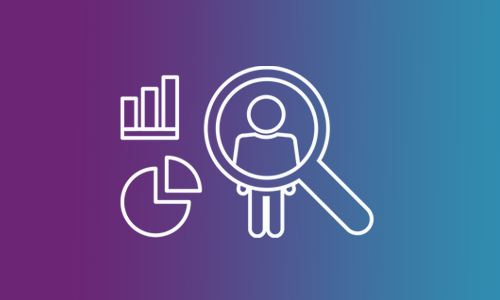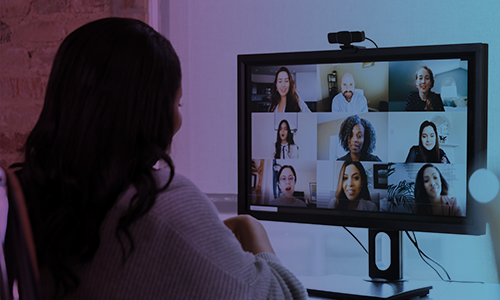In enterprise and software marketing, it’s easy to get wrapped up in talking about the features and functionalities of your products — especially as you’re close to building those features. A user persona can help you take what could be an arbitrary set and ground that subject in the actual needs of an individual.
But, should you use user personas to represent a target user when a user persona is a fictional representation? This question becomes more important as you start to make concrete product decisions based on the assumptions made in this step. Just about everything that is done from a marketing perspective needs to be grounded in solving actual problems, or a product will fail to provide the promised value.

User personas: why do we create them?
User personas are created to characterize one of your audience members and provide some detail around that person. They provide you with a touchpoint to make sure that you're speaking to the right audience in the right tone about the right things that matter to them. And to do that, you need to think about your key buyers.
Fortellis is designed as an integration platform for software developers working in the automotive industry. On the developer side of Fortellis, we’ve identified two main personas. One is the lead developer (Peter Parker) and the other persona focuses on the product/project manager role (Dennis the Menace). The humorous names were chosen to be easy to remember.
On the dealer side, there are also two main personas. One is an IT Manager (Chloe O’ Brian) and the other is a dealership General Manager (Bruce Banner). By focusing on the two personas from the dealer and developer side, we can simplify the message and make sure the product team is speaking to the right person at the right time about the right thing. Narrowing the possible personas makes communication more clear and easy to remember as opposed to having 10 different personas to choose from and losing sight of the message overall.
It’s also important to understand that an IT Manager and a General Manager are going to have different concerns. Talking to those two different people creates a different experience due to the difference in their responsibilities, educational backgrounds, daily roles, etc. The personas help to get everyone on an even playing field when talking about the same thing.
Before you come up with a user persona, you have to think about your key buyers and find examples of those people. Start by looking up people that have previously used your products. Go to their LinkedIn profile so you can see some of the groups or organizations this person is a part of, their educational background, etc. Using actual user backgrounds helps provide a more realistic persona.

Search and research: a deeper dive
Next, research other people that have the same job titles in the same type of business. For example, this original person is a software developer, they work in automotive, and their title is “Senior Developer.” Look up the other “Senior Developers” from a similar company, find the common characteristics from these two people and start to distinguish the patterns. It’s best to find about five or six different examples. This helps bring an accurate persona to life, but you also won’t risk oversimplifying a persona and use one person who might not actually be a proper representative of the persona. From there, you can start to build a persona in a document and use all of the information you gathered to put together an accurate representation.
What does JTBD do to improve user personas?
Jobs To Be Done, or JTBD, is a concept that bridges the gap between the actual daily life of your users and the idealized version of how users would interact with your product. For example, an IT Manager's JTBD is to make sure the servers and email system at the dealership are up and running and their dealer management system is working perfectly for all users.
By viewing product features and functionality through the lens of JTBD, product teams can focus on which attributes have the most impact to improve the overall daily lives of users without making misguided or over-simplified judgements. Possible improvements to the persona-building process could include mining data from your CRM system to collect relevant data points and job titles of your actual buyers.
If you’re in the market to start building personas, begin by creating or identifying proper templates. It’s important to find good templates with a Jobs-To-Be-Done component so your persona will be as accurate as possible. It’s also helpful to research your specific target users so your buyers’ persona is clearly represented.

Socialize your user personas
It’s also critical to socialize your persona with other groups within your organization. For example, if you have a UX team/designer, meet with them and see if they’ve already done some research into personas and form your vision to make sure everyone is on the same page. That way, when you’re talking about personas internally, everyone agrees on the same one instead of trying to decipher between eight different scenarios or personas.
Along with the challenge of making sure a persona is not overlooked, it’s also important to talk about these personas internally. Share your personas with other teams and get a consensus around the personas. This doesn't mean it has to be approved by a higher position, but since it was created with your best information, you want to consolidate with your other co-workers to make sure there isn’t another persona out there being used or created.
Authored on Thu, 10/29/2020 - 17:12
